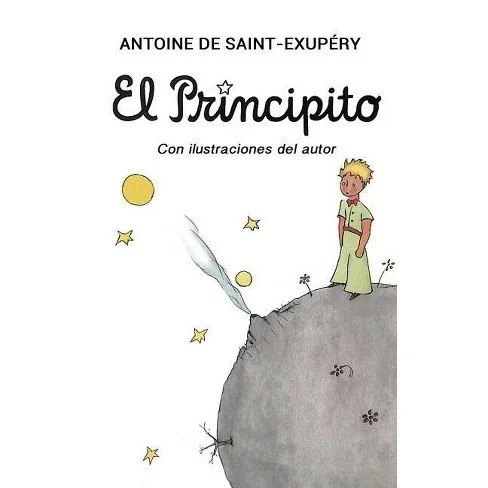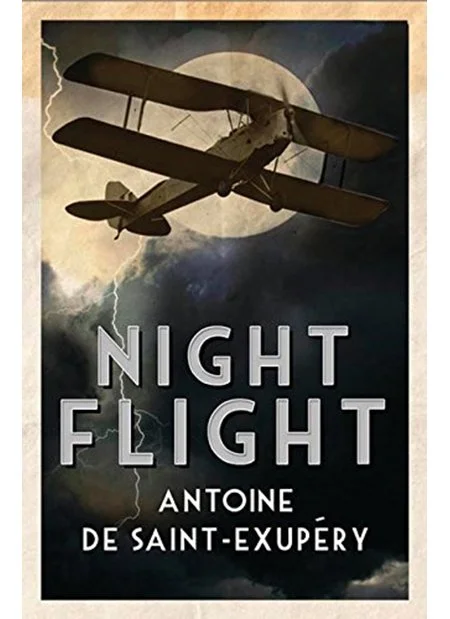The Pilot and his Little Prince
SAHARA DESERT — December 1935 — Towards 3 a.m., the pilot and his single engine plane are somewhere between sand and stars when — at 170 mph, the plane goes down, “a terrific crash that rocked our world to its foundations.“
Finally the pilot awakens. “When I opened my eyes I saw nothing but the pool of nocturnal sky. . . I lay there pondering my situation. . . I was no more than a mortal strayed between sand and stars, conscious of the single blessing of breathing. And yet I discovered myself filled with dreams. . .”
The whole world now knows those dreams. How an elfin prince appears to share his view of a world where children know all the secrets worth knowing, including one “very simple secret:— it is only with the heart that one can see rightly; what is essential is invisible to the eye.”
The Little Prince has been translated more than any work except the Bible. But if the whole world knows the prince, few outside his native France know the prince’s creator — the pilot, novelist, and dreamer Antoine de Saint-Exupéry.
Born into an aristocratic family in Lyon, Saint-Exupéry knew death at an early age. His father, a viscount, died when the boy was four. A younger brother died in adolescence. Saint-Exupéry might have settled for the haute monde but after abandoning his study of architecture, he joined the army, then took flying lessons. He was hooked.
“By the grace of the airplane I have known the fact that this earth that is our home is yet in truth a wandering star.”
The stars, the open air, and especially the night called to this child of privilege. Saint-Exupéry was soon flying stick and rudder planes on air mail routes, first over the Sahara from France to Dakar, later from Buenos Aires to Patagonia. Airborne and free to wonder, he reveled in the winds, the joy, and the bravery of pilots. But he had a twin passion — literature.
Fellow pilots marveled at this Frenchman who sat in his cockpit, reading until cleared for takeoff. Once aloft, Saint-Exupéry wiled away hours in flight, reading on. He once circled an airport for an hour until he finished reading a novel. And soon he began to write.
A first story, “The Aviator,” led to early novels. His second, Night Flight, was an international best-seller. His third, Wind, Sand, and Stars, is still considered “the best book ever written about flying.”
“Saint-Exupéry’s prose is a lot like the bracing gusts of fresh air that greet him in his open cockpit,” Outside wrote. “He shows us what it's like to be subject and king of infinite space.”
But the crash.
Dreams are no substitute for survival, and both the pilot and his mechanic were lost in the Sahara with just a thermos of coffee, an orange, a little wine, and a day’s water. They struggled, starved, and soon began to hallucinate. On their fourth day, a Bedouin found them.
In 1939, when war broke out, Saint-Exupéry flew reconnaissance missions for France. But when the Nazis conquered his country, he fled, first to Portugal, then New York where he lived above Central Park. He might have written another airborne novel but his publisher asked him to try a children’s book.
Again Saint-Exupéry was drawn to the night. For months, each midnight found him with a pot of coffee and plenty of cigarettes, filling whole pages with words and drawings that he edited, cut, pruned. “Perfection is finally attained not when there is no longer anything to add, but when there is no longer anything to take away.”
And with perfect grace, the Little Prince stepped out of a pilot’s dreams and into the hearts of children. Because “all grown-ups were once children but only few of them remember it.” And “grown-ups never understand anything by themselves, and it is tiresome for children to be always and forever explaining things to them.” And as children know, “it is such a mysterious place, the land of tears.”
As the Little Prince describes his encounters with “very strange” grown-ups — a king, a businessman, a drunkard — the dreamer grounded in exile captured both a child’s wonder and his own. “Rarely have an author and a character been so intimately bound together as Antoine de Saint-Exupéry and his Little Prince," biographer Stacy Schiff wrote. “The two remain tangled together, twin innocents who fell from the sky.”
By the time his masterpiece was published, Saint-Exupéry had been cleared to fly for DeGaulle’s Free French Air Force. At 43, eight years older than the maximum age allowed, he flew until time and gravity caught up with him.
In Wind, Sand, and Stars, a pilot talks of danger. “It’s worth it,” he says. “It’s worth the final smash-up.” On July 31, 1944, Saint-Exupéry took off in a P-38 from Corsica. He never returned. His disappearance led to decades of speculation. Finally in 1998, on an island south of Marseille, a fisherman found the shred of a pilot’s uniform pinned by a silver ID bracelet with the name — Saint-Exupéry.
Today the name graces: the airport and TGV station in Lyon, stamps in two dozen countries, Little Prince museums in Morocco, South Korea, and Japan, a mountain in Patagonia, and Little Prince spinoffs as plays, operas, movies, TV series, and all those translations. Since 2020, each June 29, Saint-Exupéry’s birthday, has been International Little Prince Day.
As the world knows, the Little Prince shares his wisdom, then leaves the pilot in the desert, sad and alone. But the pilot survives to fly again, leaving hope for children and adventurers everywhere.
“It is another of the miraculous things about mankind that there is no pain nor passion that does not radiate to the ends of the earth. Let a man in a garret but burn with enough intensity and he will set fire to the world.”














